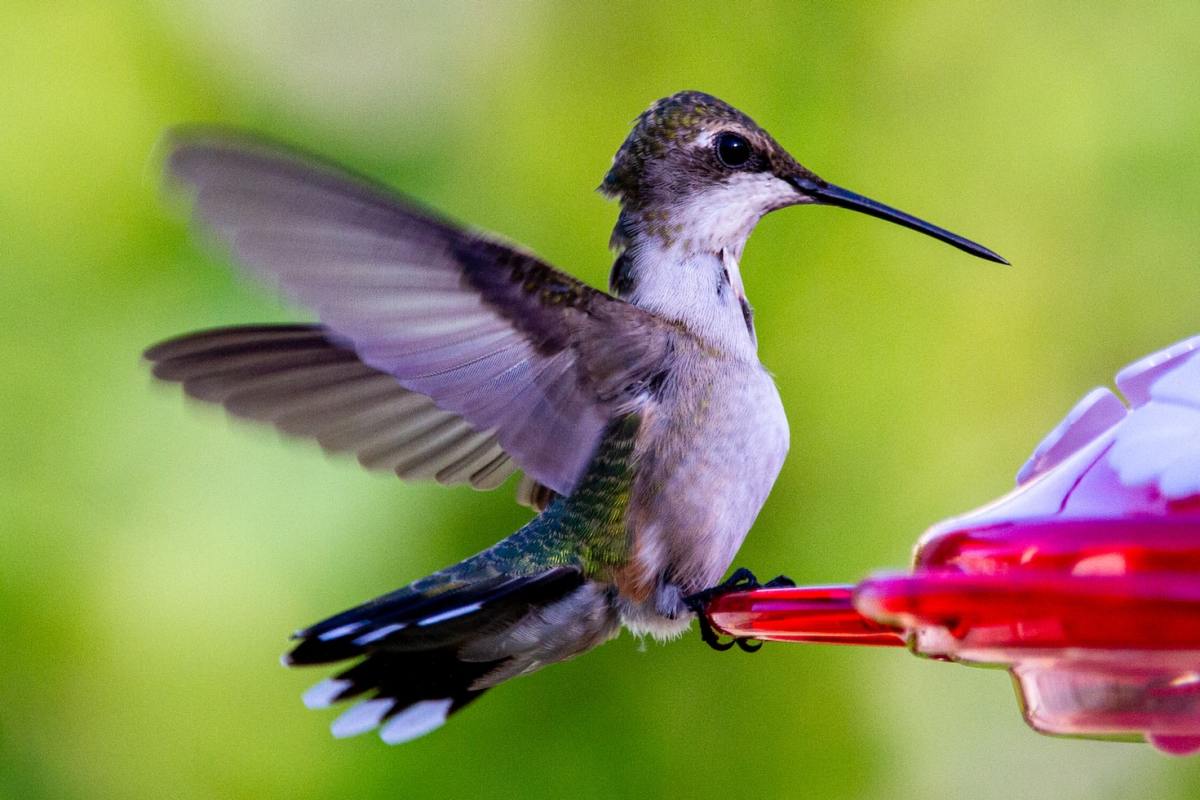Hummingbirds are fascinating creatures known for their vibrant colors and incredible agility. If you’re a bird enthusiast looking to attract these tiny wonders to your garden, it’s essential to understand the best practices for feeding hummingbirds safely. By providing the right food and maintaining clean feeding stations, you can create a welcoming environment for these delightful birds while ensuring their well-being.
Choosing the Right Feeder
When it comes to feeding hummingbirds, selecting the right feeder is crucial. Opt for feeders that are easy to clean and refill, preferably made of glass or plastic. The feeder should have red accents or be predominantly red to attract hummingbirds, as they are naturally drawn to this color. Additionally, choose a feeder with perches to allow the birds to rest while feeding.

Homemade Nectar Recipe
Commercial hummingbird nectar may contain additives that are harmful to these birds. To ensure their safety, consider making your own nectar at home. Mix four parts water with one part white granulated sugar and boil the solution for two minutes to dissolve the sugar. Let it cool before filling the feeder. Avoid using honey, artificial sweeteners, or red food coloring, as these can be harmful to hummingbirds.

Placement of Feeders
Proper placement of hummingbird feeders is essential for the birds’ safety and enjoyment. Hang the feeders in a shaded area to prevent the nectar from spoiling quickly in the sun. Place them at a height that is easily accessible for the birds but out of reach of predators like cats. Keep the feeders away from windows to prevent collisions that can injure or kill hummingbirds.

Cleaning and Maintenance
Regular cleaning and maintenance of hummingbird feeders are vital to prevent the growth of mold and bacteria that can harm the birds. Clean the feeders with hot water and a mild soap solution every time you refill them. Rinse thoroughly to remove any soap residue before refilling with fresh nectar. Inspect the feeders for damage and replace any worn parts to ensure the birds’ safety.

Creating a Hummingbird-Friendly Garden
In addition to providing feeders, you can attract hummingbirds to your garden by planting nectar-rich flowers such as bee balm, salvia, and trumpet vine. These flowers not only provide natural food sources for hummingbirds but also enhance the beauty of your outdoor space. Avoid using pesticides in your garden, as they can be harmful to hummingbirds and other wildlife.

Conclusion
Feeding hummingbirds can be a rewarding experience, but it’s essential to do so responsibly to ensure the birds’ safety and well-being. By following the best practices outlined in this article, you can create a safe and inviting environment for hummingbirds to thrive in your garden. Remember to choose the right feeder, use a homemade nectar recipe, place feeders strategically, maintain cleanliness, and cultivate a hummingbird-friendly garden. With these practices in place, you can enjoy the beauty and grace of hummingbirds while contributing to their conservation efforts.

Leave a Reply